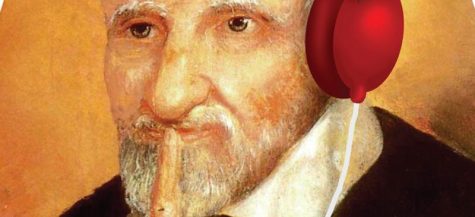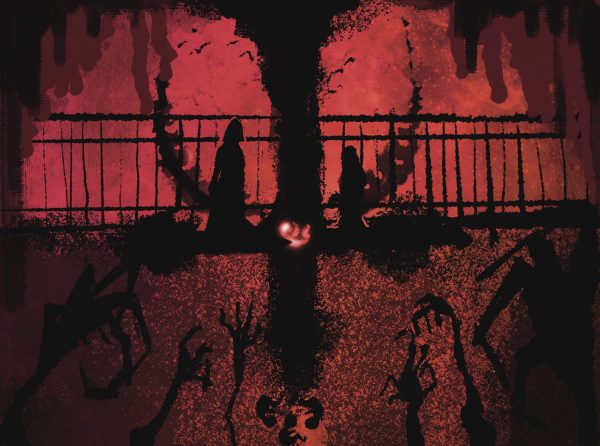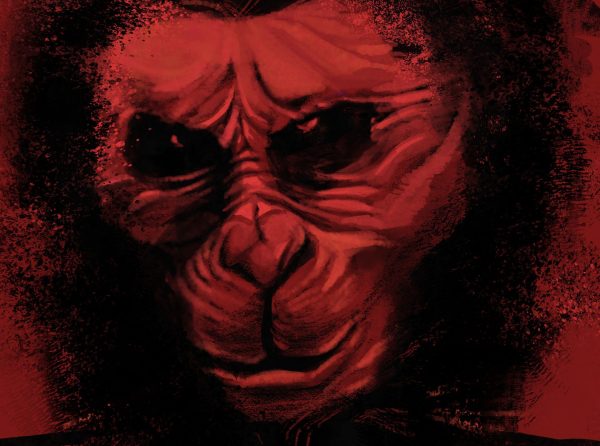A reflection on Sidney Poitier
“They call me Mr. Tibbs!”
To call this line iconic would be a major understatement. It is a line that is known even if the film in which it originally comes from is not. A line that far exceeded the “In the Heat of the Night ” writer, Stirling Silliphant’s, imaginable expectations. A line that even exceeds the mouth from which it was originally enunciated and projected. Though my hope is that after reading this article, this mouth, this man, this iconic figure of at least four decades of classic cinema, is one that at the very least piques your interest enough to discover some of his other classic outings on your own time.
This man was Sidney Poitier, who passed away last week, Thursday, Jan.6. Rather than listing a chronological walkthrough of his entire career, I will focus on three of his pictures that I believe best showcase not only the evolution of his career, but the progress that he is solely responsible for in expanding the portrayal of African Americans on the silver screen.
“Edge of the City” (1957)
The first film I will analyze is 1957’s “Edge of the City,” co-starring Poitier a year before his first Academy Award nomination in “The Defiant Ones,” and starring John Cassavetes two years before his legendary directorial debut “Shadows.” This film follows Cassavetes’ Axel Nordmann, a Korean War deserter who seeks work as a dock worker. He quickly gains employment though he is forced to pay his new boss a part of his daily salary as he threatens to reveal Axel’s secret. Poitier’s Tommy also works on the dock and leads his own group of workers. The two quickly grow a connection with Tommy serving as a mentor figure to Axel. Tommy introduces Axel to his family, Axel moves into Tommy’s neighborhood, Tommy’s wife even introduces Axel to a love interest of his own. Eventually, racial conflicts arise at work from Axel’s initial boss who takes issue with Axel working for Tommy on the dock, resulting in Tommy’s sacrifice as he is hit with a baling hook in the back. All the while Axel stays silent and says nothing as all the dock workers are questioned about the conflict. The remainder of the film follows Axel as he comes to grips with what he has done or not done. He confronts Tommy’s wife, who proceeds to tell him that he was no friend to Tommy. Eventually, consumed by his guilt and ready to deal with the consequences of his desertion from the service, Axel goes back to the dock to confront Tommy’s murder. The film ends with a powerful shot of Axel dragging his former boss on the ground to an indicated consequence that lies after the credits roll. This film is evident of the types of films that Poitier would be famous for in this decade. The charming sidekick, whose sacrifice serves as the catalyst for the white, leads transformation. Though to “Edge of the City’s” credit, Poitier’s Tommy is a character who is wise and warm hearted in his mentorship, he possesses power at the workplace as he leads a team of his own dock workers, he is unafraid and clearly on greater footing than Axel’s former boss in his multiple confrontations with him, and steers clear so much of the impoverished African American stereotype that Axel even moves into his neighborhood. The film works on a multiple metaphor basis for its almost instruction-like advice to its assumed Caucasian audience of what to do in the face of intolerance for their African American counterparts. That sacrificing their own well-being is necessary to make actual change. Its ending poses multiple questions to the audience – will Axel get court marshalled; will his boss indeed receive “justice” for Tommy’s murder? In fact, the only clear character ending is that of Tommy, which tragically is that he needs to be murdered for any of these other things to be brought into motion. So, although this film has a historical reputation of being “liberal propaganda” it is impossible to ignore some of the objective themes and imagery that it correlates to today.
“In the Heat of the Night” (1967)
The next film on our voyage through history takes place a decade after “Edge of the City” and is perhaps Poitier’s most acclaimed, the aforementioned “In the Heat of the Night.” A film which not only demonstrates how far Poitier had come as a performer but also his role in leading the charge of a fight that at this point in the late ‘60s was surely at a violent peak. I will quickly recommend films that work as great companion pieces to this film made by many of the same crew and have equally cemented themselves as part of film history: “In the Heat of the Night” cinematographer Haskell Wexler’s “Medium Cool” and editor Hal Ashby’s “The Landlord.” Now back to the topic at hand. “In the Heat of the Night” places Poitier in the role of Virgil Tibbs, a Philadelphia homicide inspector who is arrested by police for having what they deem too much money in his wallet and brought in as suspect of a murder of a factory owner while he awaits his train out of Mississippi after visiting his mother. Eventually, the film follows Tibbs as he reluctantly joins forces with the same local police officers that prejudicially arrested him to find the true murder. “In the Heat of the Night,” despite many memorable lines and sporting an extremely compelling detective plot, it is primarily a masterclass in acting and tone. Poitier as Tibbs has a bravado of control that is quite unparalleled. In a scene which finds Tibbs in the back of a holding cell, the actor’s demeanor indicates that it is all going according to plan as he is placed along with the suspect who found the dead man’s wallet. Tibbs proceeds to get all the information out of him with little effort. In its most famous scene, Tibbs’ initial arrest brings him face to face withRod Steiger’s equally well performed Chief Gillespie. Poitier maintains a mixture of poised calmness with underlying anger. As the scene continues, he again always seems confident in the situation’s outcome in his favor. When the death photographer comes in during this scene as Tibbs waits in the waiting room with other officers.Poitier’s Tibbs builds atop his characterization as the charming sidekick. Firstly, Tibbs is not Gillespie’s sidekick. Tibbs is the expert in this situation; when examining the body, Tibbs does so with an immense amount of poise and proceeds to tell Gillespie everything, including that he needs to run a proper autopsy. When visiting a plantation owned by Tibbs’ top suspect, the plantation owner slaps Tibbs in anger of being accused of an action that Tibbs returns with a slap of his own. The plantation owner asks Gillespie if he saw it and what he’s going to do. Gillespie says, “I don’t know.” That is right during the 1960s race relations while on a cotton plantation, Virgil Tibbs slapped back at his aggressor. This role clearly indicates the amount of power Poitier had as an actor even for the idea of such a scene to be created around him at such a point in history.
“Buck and the Preacher” (1972)
Our last stopping point does not only star Poitier but was also his directorial debut, a film that unfortunately does not get talked about enough in conversations of the greatest westerns of all time. This film is 1972’s “Buck and the Preacher.” Poitier goes from slapping a contemporary plantation owner in “In the Heat of the Night ” to starring as Buck an ex-union soldier now slave trail guide who wages war on a wild bunch of gunmen hired by plantation owners to kill the wagon trail Buck leads. This time Poitier is partnered with an unrecognizable Harry Belafonte who is an alcoholic con man dressed as a preacher — hence the title — and Buck’s wife, played by the great Ruby Dee. This film is stylistically violent, though never in a gratuitous manner. It is one of those films that demands its audience to a level of involvement of shouting at the screen and dodging bullets along with Buck in its thrilling hilltop final culmination and satisfying end ride into the sunset. To no surprise, this type of revisionist western has not been replicated nearly as often as Poitier’s other films. “Buck and the Preacher” created its own genre where none previously existed. It is not a blaxploitation film that would become popular the year before by the like of Melvin Van Peebles, it is not a spaghetti western that would have been made by the likes of Sergio Leone a decade earlier, it is not a western epic that would have been made by the likes of John Ford two decades prior. It exists in a genre so unique that another film would not really be made in this category until two decades later with Van Peebles’ son Mario Van Peebles’ “Posse” in 1993 and more contemporarily (and controversially) by Quentin Tarantino in 2012 with “Django Unchained.”
Sidney Poitier leaves behind a legacy of resilience, despite criticisms of being Hollywood’s token minority. Even in Poitier’s earliest efforts, he participated in films that vocally spoke against the status quo and more admirably allowed him to eventually gather enough notoriety to make the type of pictures that were in his single artistic vision and explicitly spoke against the status quo, making room for him not to be the only African American Academy Award best actor winner —an honor that he singularly maintained until nearly 40 years later. So, with that being said, let us build a chapel on the foundation which Sir Sidney built.





![DePaul sophomore Greta Atilano helps a young Pretty Cool Ice Cream customer pick out an ice cream flavor on Friday, April 19, 2024. Its the perfect job for a college student,” Atilano said. “I started working here my freshman year. I always try to work for small businesses [and] putting back into the community. Of course, interacting with kids is a lot of fun too.](https://depauliaonline.com/wp-content/uploads/2024/04/ONLINE_1-IceCream-600x400.jpg)







